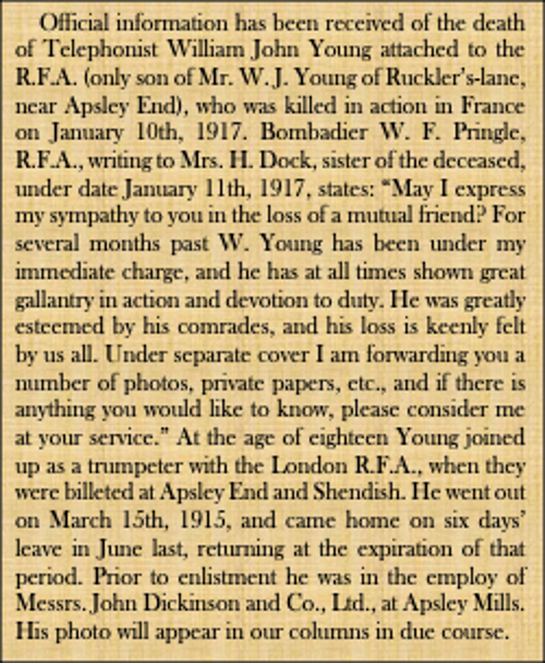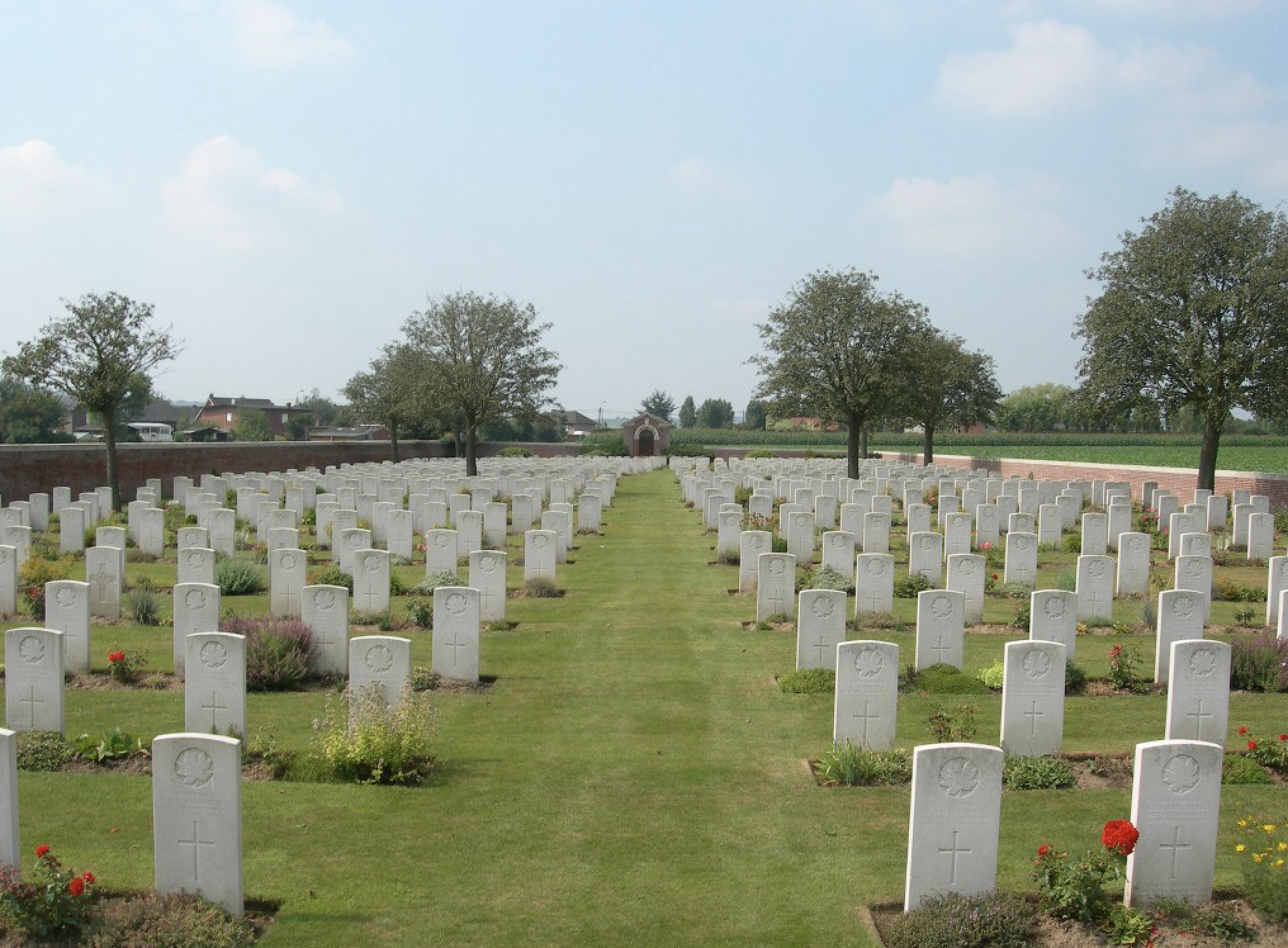Fallen in January 1917:
William John Young
WILLIAM JOHN YOUNG
965577 Gunner
8th (London) Bde., Royal Field Artillery
Killed in Action Wednesday, 10th January 1917
Remembered with Honour, Reninghelst New Military Cemetery, West-Vlaanderen, Belgium, Grave II. A. 15.
William John Young was born in Hemel Hempstead in the summer of 1896 and was baptised a month later on Sunday, 19th July at St Paul’s Church in the town. He was the only son and youngest child born to William Jabez Young and Eliza Maria Durrant who had six daughters before William was born. The girls were: Edith Pamela, Ruth Evelin, Eliza Theresa, Ethel May, Ruby Idena and Violet Ivy who died shortly after she was born.
In 1901 four-year-old William was staying with his Uncle and Aunt, Herbert and Pamela Bates at their home in Willesborough, Ashford in Kent. By the time of the next census in 1911, William had left school and started work with John Dickinson & Co Limited in Apsley where he was a ‘Printer’s Assistant’.
On the outbreak of war, he left Dickinsons and enlisted in the Colours, attesting at Plumstead in East London on the 30th October 1914. William joined the 8th London (Reserve) (Howitzer) Brigade, Royal Field Artillery (RFA) as a ‘Trumpeter’. The Birgade became the 238th Brigade RFA and concentrated around St Albans and Apsley, where they were billeted at Shendish, for training before going to France.
The Brigade was only the second Territorial Force Division to go to the Front and William landed at Le Havre in France on the 16th March 1915. During that year, he fought in the Battles of Festubert and Loos and in 1916 he fought at Vimy Ridge, Flers-Courcelette and the Battle of Transloy Ridges.
His service records also describe that he was sick for three days in January 1916; docked three days pay in February for neglect of duty; had seven days home leave in June when he returned to Kings Langley; went on ‘Signals’ training in July and also had to pay 1s 9d for losing a water bottle; was slightly wounded by shell fire in August resulting in seven days in recovery; went on a wireless course in December; and finally was on sick leave with ‘pyrexia’ (fever) until the 4th January 1917 when he re-joined his unit.
The 238th had moved to Hazebrouck in November 1916 where William, following his signals and wireless training, was redesignated a ‘Telephonist’, although still expected to fight. Shortly after he had returned from his bout of ‘pyrexia’ in early January 1917 the Brigade was still in the vicinity of Hazebrouck and on the 10th January the Brigade War Diary recorded the following: “10th C/238 Battery registered lone gun. 34th Battery heavily shelled from 1 p.m. to 2.45 p.m. 1 O.R Killed.”
The O.R. killed was William and he died on Wednesday, 10th January 1917.
The month following his death, a brief report appeared in the Hemel Gazette announcing his demise and reproducing the contents of a letter sent to William’s oldest sister, Edith Dock. (see extract)
He was also remembered in a memorial service at All Saints Church in Kings Langley, conducted by the Reverend F. Halsey on Sunday, 29th April 1917.
William is Remembered with Honour in Reninghelst New Military Cemetery, West-Vlaanderen, Belgium where he is interred in Grave II. A. 15.
He was only 20 years old when he died.
William was entitled to the 1914–15 Star, the British War Medal and the Allied Victory Medal.
Gnr. William Young c1915 (Courtesy: The Hertfordshire, Hemel Hempstead Gazette and West Herts Advertiser)
Extract from The Hertfordshire, Hemel Hempstead Gazette and West Herts Advertiser 3rd Feb. 1917.
Reninghelst New Military Cemetery, West-Vlaanderen, Belgium (Courtesy: CWGC)

